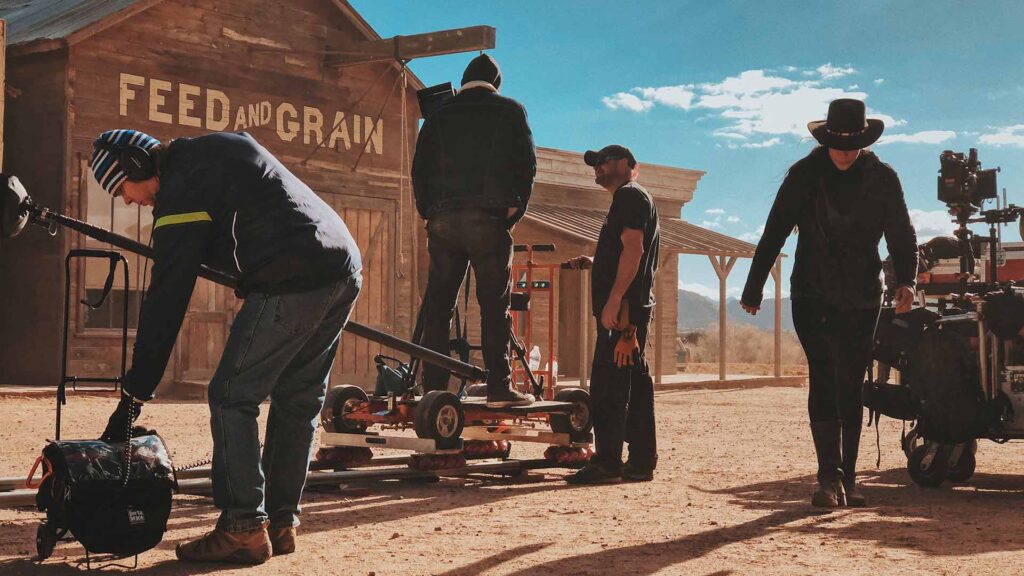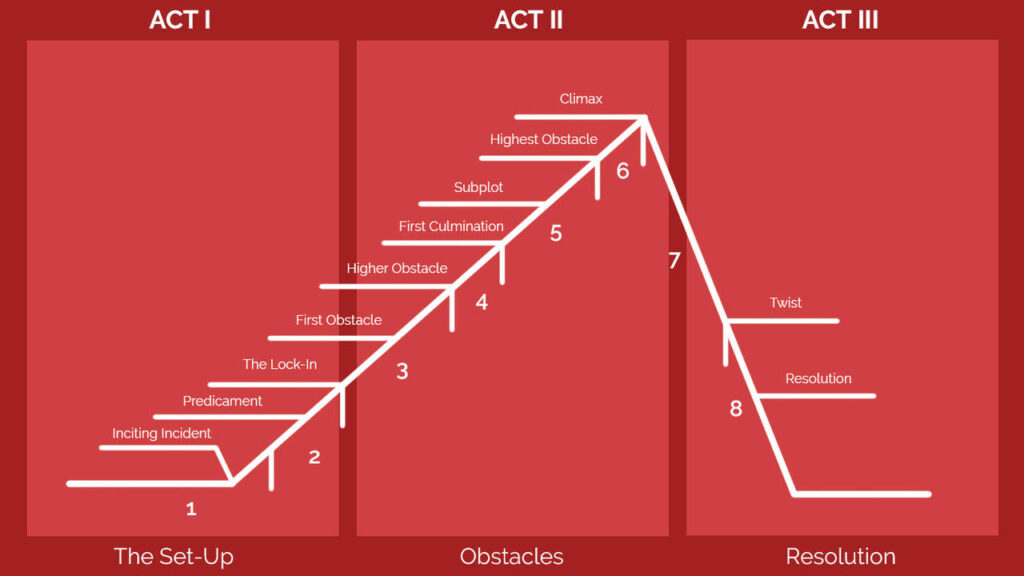
How to Create a Movie or Short Film: A Comprehensive Step-by-Step Guide
Introduction
Creating a movie or short film is a creative endeavor that involves multiple stages, from developing the concept to distributing the finished product. Filmmaking combines artistry, technical skill, and careful planning. This guide provides a detailed step-by-step overview of each phase, ensuring aspiring filmmakers have a clear roadmap to follow.
- Overview of the Filmmaking Process: Filmmaking consists of several stages: concept development, scriptwriting, pre-production, production, post-production, and distribution and marketing.
- Importance of Creativity, Planning, and Budgeting: Successful filmmaking balances creative vision with practical considerations such as budget and logistics.
- Key Considerations for Filmmakers: Consider the genre, target audience, length of the film, and available resources, which will influence every decision made throughout the process.
1. Concept Development
The concept development stage is where the idea for your movie or short film begins to take shape. This involves defining the story, creating characters, and building the world in which the narrative unfolds.
- How to Define a Compelling Story or Concept
- Identify the Core Idea: Determine the central theme or message you want to convey. Consider universal themes (e.g., love, conflict, discovery) that resonate with a wide audience.
- Create a Unique Premise: Make sure your concept stands out. Combine familiar ideas in new ways or approach a common theme from a fresh perspective.
- Tips for Creating a Logline and Developing Characters
- Write a Logline: A one-sentence summary that outlines the protagonist, their goal, the conflict, and the stakes. Example: “A young girl must navigate a dystopian society to save her brother from a totalitarian regime.”
- Develop Characters: Flesh out your main characters with detailed backstories, motivations, flaws, and arcs. Ensure every character has a distinct personality and purpose in the story.
- Importance of Research and Finding Inspiration
- Conduct Thorough Research: Research can add depth and authenticity to your story, especially if it involves specific cultures, historical events, or technical knowledge.
- Find Inspiration: Draw ideas from personal experiences, literature, art, news, and everyday life. Keep a journal of ideas and brainstorm regularly.
- Steps for Brainstorming and Refining the Initial Idea
- Use Brainstorming Techniques: Mind mapping, free writing, or group brainstorming sessions can help expand initial ideas.
- Create an Outline: Map out the key plot points, turning points, and character arcs. Refine your idea to ensure it is coherent and compelling.
2. Scriptwriting
Once the concept is fully developed, the next step is to translate the idea into a screenplay, the blueprint for the entire film.
- Guide to Writing a Screenplay: Structure, Format, and Key Elements
- Understand the Three-Act Structure: Divide your script into three acts — Act 1 (Setup), Act 2 (Confrontation), and Act 3 (Resolution). Ensure each act has a distinct purpose.
- Use Proper Formatting: Follow industry standards for script format, including scene headings, action descriptions, dialogue, and transitions. Proper formatting helps readability and makes the script appear professional.
- Tips for Writing Dialogue, Scenes, and Actions
- Write Engaging Dialogue: Make dialogue sound natural, but also purposeful. Each line should reveal character, advance the plot, or enhance the theme.
- Create Memorable Scenes: Every scene should have a clear objective and contribute to the overall story. Use visual storytelling to convey emotions and themes.
- Describe Actions Effectively: Keep action descriptions concise and active. Focus on what the audience will see and hear.
- How to Refine and Edit the Script
- Use Feedback: Share your script with trusted peers or mentors to get constructive feedback. Revise multiple times, focusing on clarity, pacing, and emotional impact.
- Trim Unnecessary Elements: Remove scenes, dialogue, or characters that do not serve the story. Ensure the script is tight and engaging.
- Software and Tools for Scriptwriting
- Choose the Right Software: Use tools like Final Draft, Celtx, or Trelby to format your script correctly and collaborate with others.
3. Pre-Production Planning
Pre-production is all about preparing everything needed to shoot the film. This phase involves organizing, budgeting, casting, scouting locations, and assembling a crew.
- Steps for Storyboarding: Visualizing Key Scenes and Planning Camera Angles
- Create a Storyboard: Sketch or use digital tools to create a visual sequence of each scene, showing key moments, camera angles, and movements.
- Plan Shot Composition: Decide on framing, camera movement, and lighting for each shot. Consider the emotional impact of different angles and movements.
- Budgeting: Estimating Costs and Securing Funding
- Develop a Budget Breakdown: Include costs for pre-production, production, post-production, and marketing. Account for expenses like equipment rentals, location fees, talent, and insurance.
- Secure Funding: Explore funding options such as crowdfunding platforms (Kickstarter, Indiegogo), applying for grants, or finding private investors.
- Casting: Finding and Hiring Actors
- Create Casting Calls: Write clear, concise descriptions for each character and distribute them through casting websites, social media, or local theater networks.
- Hold Auditions: Conduct auditions to assess the fit and chemistry of actors. Consider conducting screen tests for key roles.
- Location Scouting: Tips for Finding and Securing Filming Locations
- Identify Suitable Locations: Consider the visual style, logistical needs, and budget. Visit multiple locations to assess their suitability.
- Secure Permits: Obtain necessary permits and permissions from local authorities or property owners.
- Equipment and Crew: Essential Needs and Budget-Friendly Options
- List Essential Equipment: Cameras, lenses, lights, microphones, and stabilizers are basic requirements. Consider renting to save costs.
- Assemble Your Crew: Hire key personnel (director, cinematographer, sound engineer, makeup artist). Look for freelancers or collaborate with film schools to find skilled crew members at lower rates.
4. Production
Production is where the script comes to life through filming. This phase requires strict adherence to schedules, effective communication, and problem-solving skills.
- How to Create a Shooting Schedule and Organize Production Logistics
- Develop a Detailed Schedule: Organize the shoot by location, actor availability, and scene requirements. Ensure the schedule is realistic and allows for unforeseen delays.
- Manage Logistics: Plan transport, accommodations, meals, and equipment needs. Use a production management tool or app to keep track of logistics.
- Best Practices for Rehearsals and Working with Actors
- Conduct Table Reads: Have actors read through the script to understand their roles and identify any dialogue issues.
- Rehearse Key Scenes: Focus on emotionally or technically complex scenes. Encourage feedback and open communication with actors to achieve the best performance.
- Techniques for Filming Efficiently
- Use Shot Lists: Create a detailed list of all the shots needed for each scene. Prioritize essential shots and plan alternatives for difficult setups.
- Cover All Angles: Film multiple takes from different angles and perspectives to provide flexibility in editing.
- On-Set Protocols for Safety, Communication, and Organization
- Maintain Safety Protocols: Ensure the safety of all cast and crew members. Have safety briefings and first aid kits on set.
- Establish Clear Communication: Use walkie-talkies or a communication app for seamless coordination. Keep a daily call sheet with contact details and scene breakdowns.
5. Post-Production
Post-production is where the film is shaped into its final form through editing, sound design, visual effects, and color grading.
- Steps for Video Editing: Organizing Footage, Cutting Scenes, and Pacing
- Organize Footage: Sort and label all clips by scene and take to streamline the editing process.
- Cut Scenes: Assemble a rough cut, focusing on pacing, continuity, and story coherence. Refine the cut to enhance the emotional flow and rhythm.
- Fine-Tune Pacing: Adjust the timing of cuts, transitions, and scene length to maintain viewer engagement.
- Basics of Visual Effects (VFX) and CGI
- Identify Needs: Determine which scenes require visual effects or CGI. Plan for these during pre-production to save time and costs.
- Choose Software: Use tools like Blender for 3D effects or Adobe After Effects for compositing. Collaborate with VFX artists if needed.
- Sound Design and Music: Importance of Sound Mixing, Foley, and Scoring
- Record and Mix Dialogue: Clean up and mix dialogue to ensure clarity and consistency.
- Add Sound Effects and Foley: Create or source sound effects to enhance realism. Foley artists can recreate everyday sounds for added depth.
- Score the Music: Select or compose a soundtrack that complements the film’s tone. Use royalty-free music libraries or hire a composer.
- Color Grading: Techniques for a Professional Look
- Use Color Grading Software: Adjust the color balance, contrast, and saturation to create a consistent visual style. DaVinci Resolve is popular for professional color grading.
- Match the Tone: Ensure that the color palette aligns with the mood and themes of the film.
6. Distribution and Marketing
Getting your film to the right audience is crucial to its success.
- Strategies for Choosing the Right Distribution Channels
- Evaluate Platforms: Consider streaming services (Netflix, Amazon Prime), online platforms (YouTube, Vimeo), or traditional theatrical releases.
- Leverage Film Festivals: Submit to festivals that align with your genre and style to gain exposure and credibility.
- How to Create a Marketing Plan
- Develop a Marketing Strategy: Plan a campaign that includes trailers, posters, social media content, and press releases.
- Utilize Social Media: Build a presence on platforms like Instagram, Twitter, and Facebook. Engage with potential audiences through behind-the-scenes content and teasers.
- Tips for Submitting to Film Festivals
- Research Film Festivals: Find festivals that cater to your film’s genre, budget, and target audience. Prepare a strong submission package, including a synopsis, trailer, and promotional materials.
7. Film Release and Analysis
Releasing your film involves organizing events and gathering audience feedback for future projects.
- Organizing a Premiere and Screenings
- Plan the Premiere: Choose a venue, invite key stakeholders, and create an event plan. Consider both physical and virtual screenings.
- Arrange Additional Screenings: Organize screenings at local cinemas, film clubs, or community centers to reach a broader audience.
- Gathering and Analyzing Audience Feedback
- Collect Feedback: Use surveys, online reviews, and social media polls to gather feedback. Analyze comments to identify strengths and areas for improvement.
- Measure Success: Evaluate the film’s success using metrics like viewer numbers, critical reviews, and audience engagement.
- Monetization Strategies and ROI Calculation
- Explore Monetization Options: Consider selling the film on digital platforms, licensing it to distributors, or partnering with brands.
- Calculate ROI: Compare the film’s total revenue to its production and marketing costs to assess profitability.
8. Continuous Improvement
Filmmaking is an ongoing learning experience, requiring constant adaptation and growth.
- Reflecting on the Filmmaking Process
- Conduct a Post-Mortem Review: Analyze what worked well and what didn’t. Document lessons learned for future projects.
- Identify Improvement Areas: Focus on specific skills or processes that need enhancement.
- Networking and Building Relationships
- Attend Industry Events: Join film festivals, workshops, and networking events to build relationships with other filmmakers, producers, and distributors.
- Engage in Online Communities: Participate in forums, groups, and online networks to share experiences, get advice, and find collaborators.
- Staying Updated on Trends and Techniques
- Follow Industry News: Keep up with the latest trends in filmmaking technology, techniques, and styles.
- Take Courses and Workshops: Continuously learn new skills, from screenwriting to VFX, to stay competitive in the industry.
Conclusion
Creating a movie or short film is an intricate process that demands a balance of creativity, technical skills, and strategic planning. By following the comprehensive steps outlined in this guide, aspiring filmmakers can navigate the complexities of filmmaking, from concept to distribution. Remember, every film is a learning opportunity — embrace creativity, stay adaptable, and continue refining your craft. Start your journey today, and let your story unfold on the big screen!




